A Month in Mexico; meeting the Caribbean manta ray
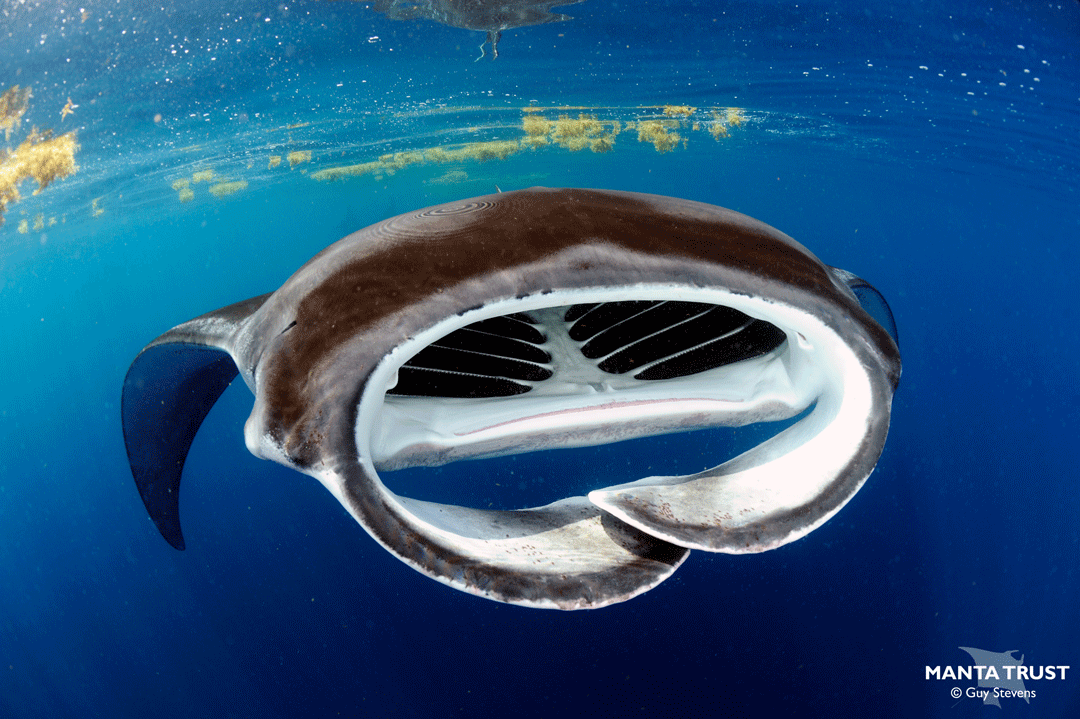
Photo © Guy Stevens | Manta Trust
As a member of the Manta Trust’s core operational team, I work to support over twenty-five mobulid (manta and devil ray) research and conservation projects worldwide. The core team coordinates activities, facilitates collaboration and shares successful practices. This ensures that all members of this global network (our manta family!) are working towards key goals identified in the Manta Trust’s Global Strategy & Action Plan for Mobulids. It also means that I have the privilege of getting to know some truly inspiring people who have dedicated their lives to studying and protecting mobulid rays. In July, I travelled to Mexico to visit two such people; Karen Fuentes (Founder) and Annie Murray (Project Manager) of the Manta Caribbean Project.
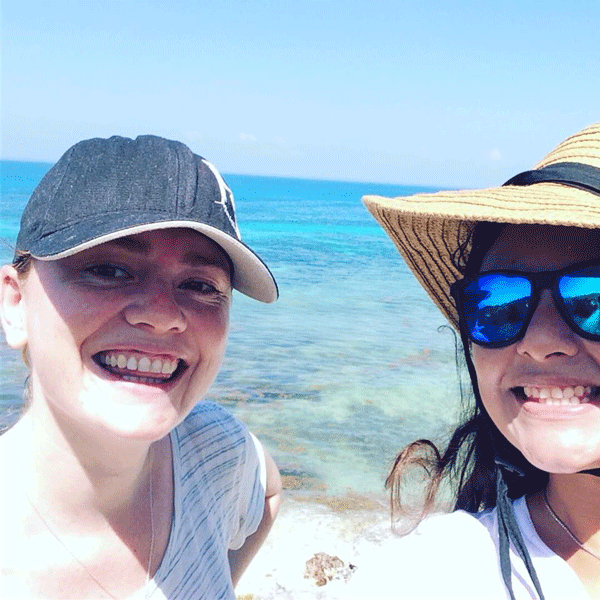
Annie Murray and Karen Fuentes. Photo © Karen Fuentes
Each year between May and September, the nutrient-rich waters of the Mexican Caribbean Biosphere Reserve attract huge congregations of whale sharks to feed on their abundance of plankton. These spotty behemoths, in turn, attract many tourists to the area, all excited to share the water for a few exhilarating minutes with the world’s largest fish.
A few years ago, whilst working as a guide for a local tour operator, Karen Fuentes noticed that the whale sharks weren’t the only planktivores getting in on the action; manta rays were often spotted alongside the sharks, barrel rolling and gorging themselves on the plankton buffet. After falling head over heels in love with these ocean acrobats and doing some further investigation, Karen discovered that nobody was doing any research into this manta population. So, in 2013 she founded the Manta Caribbean Project and has never looked back!
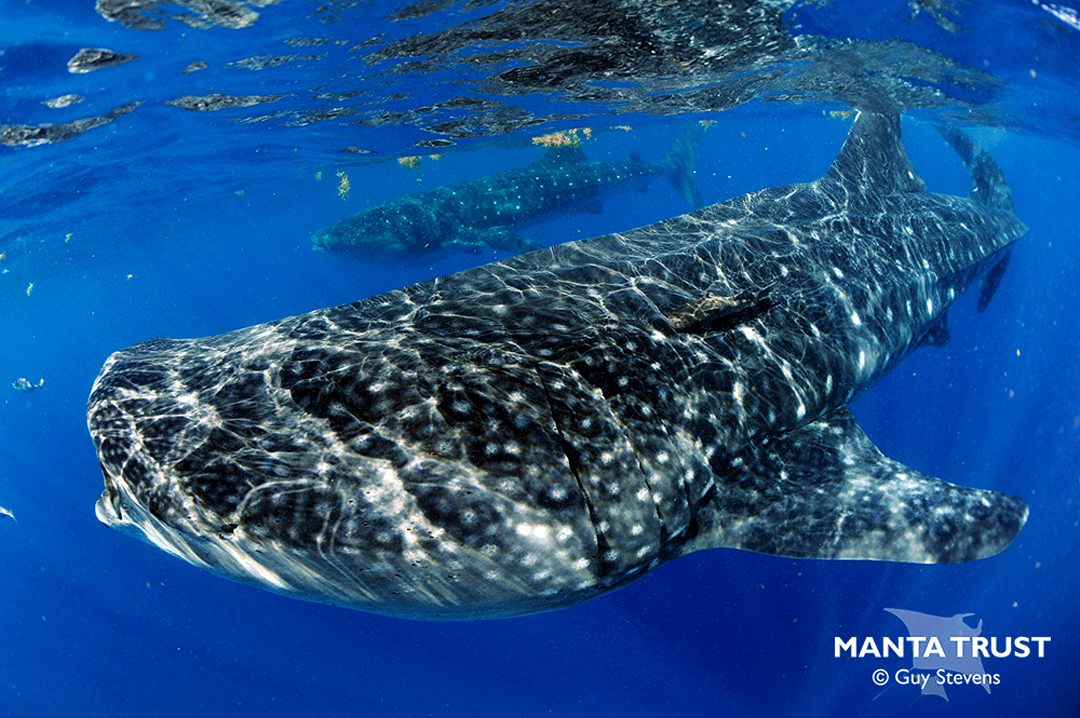
Photo © Guy Stevens | Manta Trust
On my first day at sea in the Mexico Caribbean, we didn’t find any of our flappy friends, but we did get the full whale shark experience. As we arrived at the main feeding site, I realised there were more whale sharks swimming around than I could count. They were passing back and forth between the many tour boats, with their huge mouths gaping just below the ocean surface (they look like enthusiastic opera singers). I understood then how whale sharks are able to filter around 600,000 litres of water per hour!
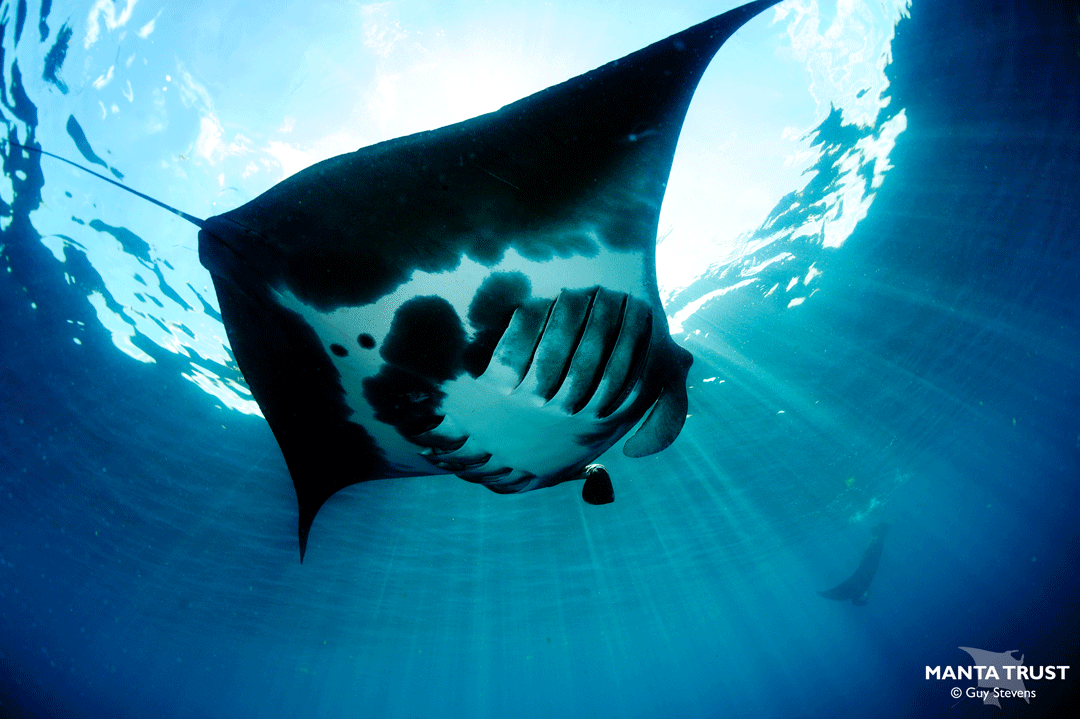
Manta tourism is not currently allowed in the region, though of course sometimes when tourists are swimming with the whale sharks they are treated to a passing manta or two. Karen, however, has been granted a research permit, allowing her and her team to swim with mantas within the Biosphere Reserve in order to collect ID shots and observe behaviour. This meant that we had the freedom to search for mantas outside of the whale shark aggregation during field trips. So, on day two, we ventured further afield, and boy did we get lucky! Not only did we discover an area with plenty of feeding mantas, we also encountered multiple schools of West Atlantic pygmy devil rays (Mobula hypostoma) feeding alongside them. In fact, on this particular day, Dr. Guy Stevens (Founder and CEO for the Manta Trust) got his first-ever set of photographs showing manta and devil rays in the same frame.

Photo © Guy Stevens | Manta Trust
The Manta Caribbean Project believes a reason why the Mexico Caribbean is a particularly special place to study manta rays is because the local manta population is potentially a third, putative (yet undescribed) species of manta ray. The mantas here look like oceanic manta rays (Mobula birostris) but are closer in size to reef manta rays (Mobula alfredi), and they have a mixture of other characteristics from both described manta species. To learn more about the different mobulid species, check out our Guide to Manta and Devil Rays of the World.
Unfortunately, this fascinating population is under threat from fisheries that are targeting them primarily to use as bait for shark fishing. It is also suspected that many manta and devil rays are caught and killed incidentally by fisheries targeting other species in the region.
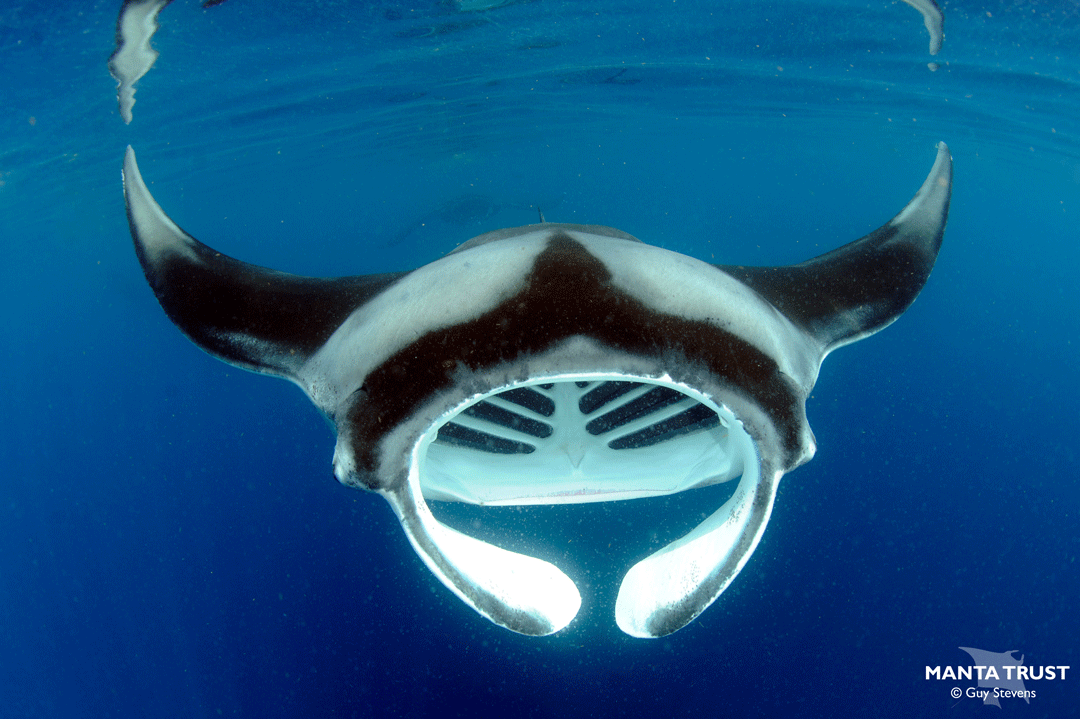
Photo © Guy Stevens | Manta Trust
Karen and Annie are building a database of identified mantas in the area (individual manta rays can be recognised by the unique spot pattern that each has on their belly), to learn more about this population’s size, dynamics and distribution. Ultimately, they hope that the knowledge they gain will help to bring about stricter protective measures for manta rays in the region, but they have their work cut out for them! The Biosphere Reserve is made up of 5.7 million square hectares of protected waters, so it is an enormous study area. Within the Reserve, Karen and Annie regularly visit the same few sites where they know they can often find mantas, but there are many days and large periods of the year where no one knows where the mantas go. This year, using funding secured through the Manta Trust, Karen and Annie will for the first time have the opportunity to conduct aerial surveys; by taking to the skies and surveying much greater areas of the Reserve, the Manta Caribbean Project hopes to locate new aggregation sites and vital habitats for this manta population.
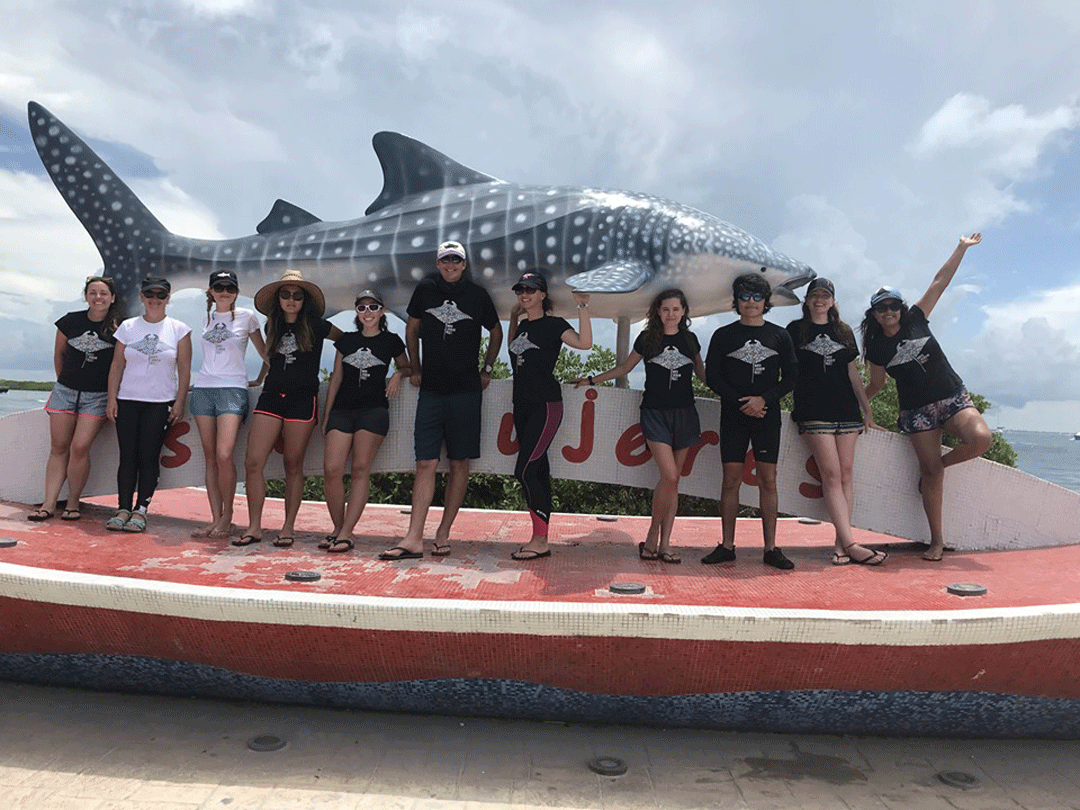
Manta Caribbean Project team and volunteers, July 2019. Including Bex Carter 3rd left, Guy Stevens 6th left, Karen Fuentes 1st right, Annie Murray 2nd right. Photo © Karen Fuentes
For me, a mere month in Mexico with Karen and Annie was not enough time and so I am determined to make my way back to this special location again one day in the future. In the meantime, I am delighted to continue supporting this exciting project from afar and look forward to learning more about the mysterious Caribbean manta.
Click here to learn more about the Manta Caribbean Project visit.
